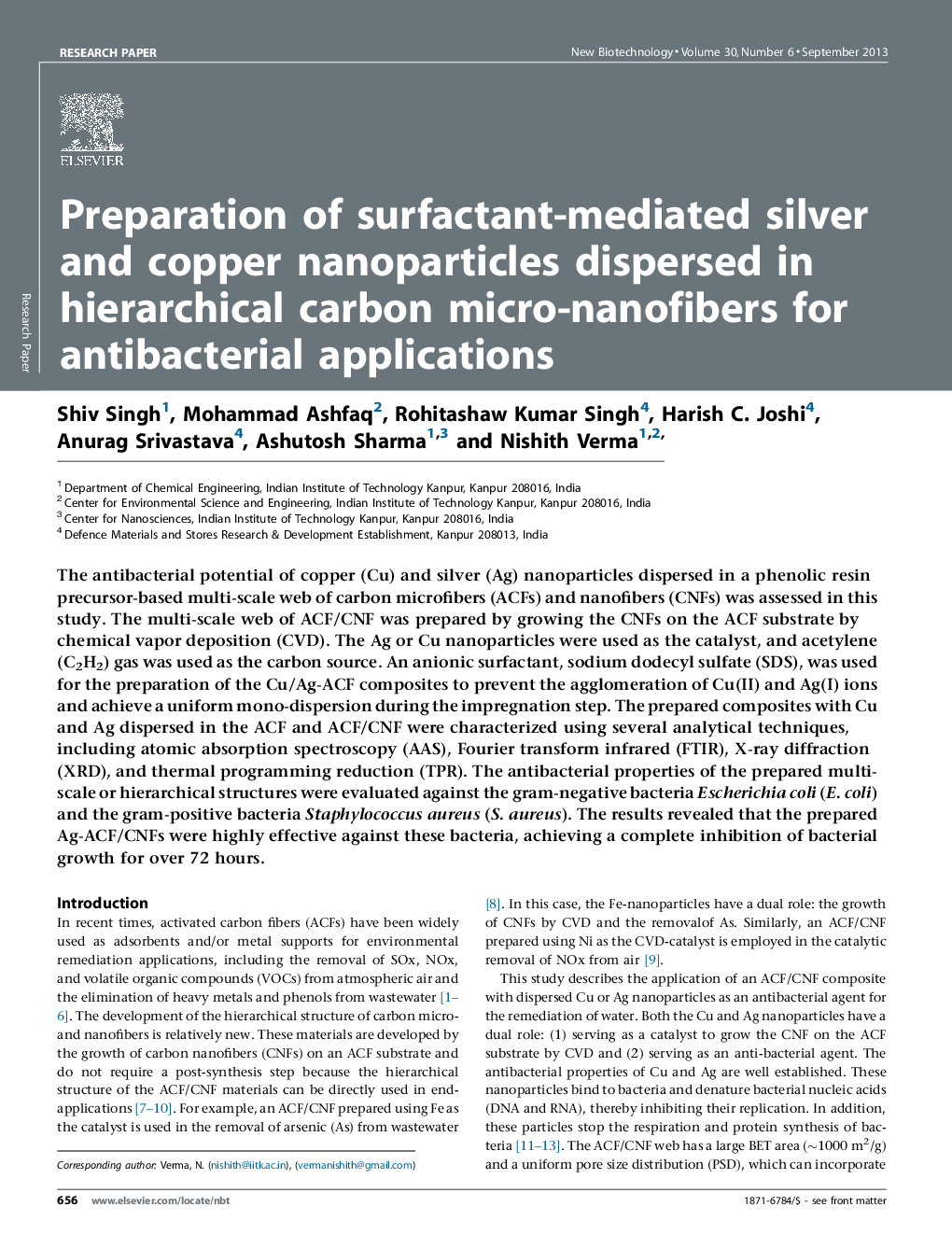| Article ID | Journal | Published Year | Pages | File Type |
|---|---|---|---|---|
| 33271 | New Biotechnology | 2013 | 10 Pages |
•Cu- and Ag nanoparticles produced in situ on surfactant-mediated ACF.•ACF/CNF prepared by catalytic CVD using ACF substrate.•Ag-ACF/CNF superior antibacterial agent than Cu- or Ag-ACF.•Ag-ACF/CNF effective against both gram-positive and gram-negative bacteria.
The antibacterial potential of copper (Cu) and silver (Ag) nanoparticles dispersed in a phenolic resin precursor-based multi-scale web of carbon microfibers (ACFs) and nanofibers (CNFs) was assessed in this study. The multi-scale web of ACF/CNF was prepared by growing the CNFs on the ACF substrate by chemical vapor deposition (CVD). The Ag or Cu nanoparticles were used as the catalyst, and acetylene (C2H2) gas was used as the carbon source. An anionic surfactant, sodium dodecyl sulfate (SDS), was used for the preparation of the Cu/Ag-ACF composites to prevent the agglomeration of Cu(II) and Ag(I) ions and achieve a uniform mono-dispersion during the impregnation step. The prepared composites with Cu and Ag dispersed in the ACF and ACF/CNF were characterized using several analytical techniques, including atomic absorption spectroscopy (AAS), Fourier transform infrared (FTIR), X-ray diffraction (XRD), and thermal programming reduction (TPR). The antibacterial properties of the prepared multi-scale or hierarchical structures were evaluated against the gram-negative bacteria Escherichia coli (E. coli) and the gram-positive bacteria Staphylococcus aureus (S. aureus). The results revealed that the prepared Ag-ACF/CNFs were highly effective against these bacteria, achieving a complete inhibition of bacterial growth for over 72 hours.
Graphical abstractFigure optionsDownload full-size imageDownload as PowerPoint slide
